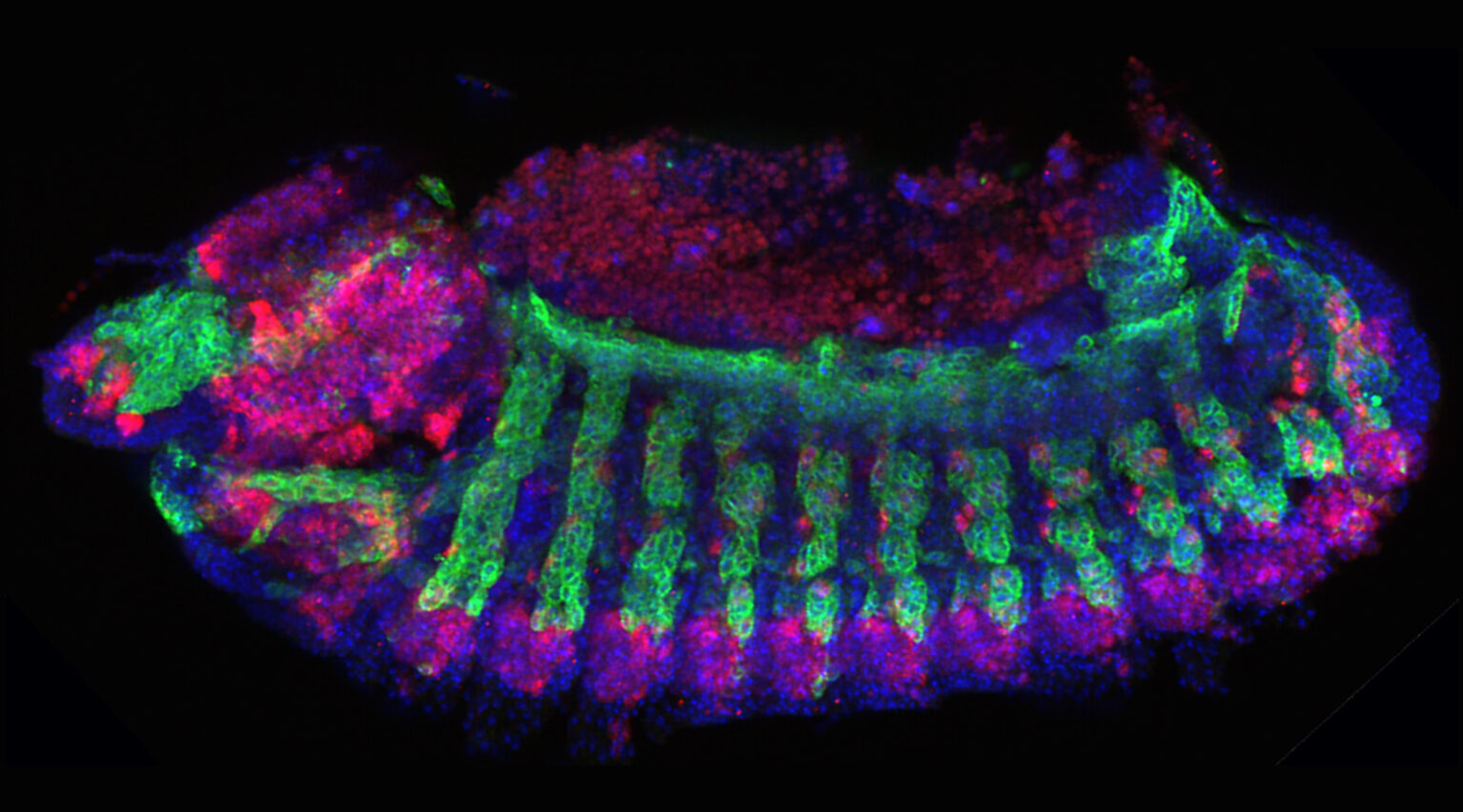News
12 October 2023
How artificial intelligence is transforming the future of science and medicine
A bioinformatician’s journey using AI at the Stowers Institute for Medical Research
Read Article
We seek to understand how different stretches of DNA provide information for gene transcription, expression, and regulation by developing computational tools for analyzing vast quantities of genetic information.
Jump to:
Publications
Research Summary
Genetics and Genomics, Development and Regeneration, Molecular and Cell Biology, Systems Biology
Mice, Fruit flies
The Zeitlinger Lab focuses on how DNA sequence information in the genome controls gene regulation in Drosophila and mice to gain insight that can be applied to the human genome in development and disease.
Gene regulation is the process by which a cell determines which genes to turn on and off and when to create specific cells in the body. The Zeitlinger Lab analyzes whole genomes to predict the fate of cells.
Zeitlinger discovered that paused RNA polymerase II is found genome-wide. RNA polymerase II starts the transcription process - producing RNA messages from DNA - but then pauses, as if waiting for a signal to proceed. If paused polymerase is present, the gene is more likely to be activated in the future.
The Zeitlinger Lab develops genomic techniques, including ChIP-nexus, that allow researchers to collect information from vast amounts of cells — sometimes numbering in the millions — to provide an accurate picture of how genes are regulated. They also apply deep learning to ChIP-nexus data from different cell types and stages to better understand the cis-regulatory code (how regulatory DNA sequences affect neighboring genes) and how this code changes during development. Additional technology developed is ChIP-next that allows deciphering of cis-regulatory information, stretches of non-coding DNA that regulate gene expression, from many fewer cells.
Principal Investigator
Investigator
Stowers Institute for Medical Research
Julia Zeitlinger, Ph.D., is a developmental and computational biologist where she serves as an Investigator at the Stowers Institute.

Julia Zeitlinger, Ph.D., is a developmental and computational biologist where she serves as an Investigator at the Stowers Institute.

Zeitinger and her team developed ChIP-nexus, an innovative technique described in Nature Biotechnology in 2015, which gives investigators an accurate high-resolution map of transcription binding sites.

News
12 October 2023
A bioinformatician’s journey using AI at the Stowers Institute for Medical Research
Read Article
In The News

04 April 2023
From KCTV5 (CBS), Julia Zeitlinger, Ph.D., and her team are working to extract information from DNA, which would normally take decades to accomplish with experiments. Now, thanks to artificial intelligence, it’s as if someone hit the fast-forward button and results are now down to minutes if not seconds.
Read Article
News
06 April 2023
Kaelan Brennan is a predoctoral researcher in the Zeitlinger Lab at the Stowers Institute. He provided a “Look in the Lab” to showcase the research the team is currently conducting.
Read Article
TATA and paused promoters active in differentiated tissues have distinct expression characteristics
Ramalingam V, Natarajan M, Johnston J, Zeitlinger J. Mol Syst Biol. 2021;17:e9866. doi: 10.15252/msb.20209866.
Seven myths of how transcription factors read the cis-regulatory code
Zeitlinger J. Curr Opin Syst Biol. 2020;23:22-31.
Base-resolution models of transcription-factor binding reveal soft motif syntax
Avsec Z, Weilert M, Shrikumar A, Krueger S, Alexandari A, Dalal K, Fropf R, McAnany C, Gagneur J, Kundaje A, Zeitlinger J. Nat Genet. 2021;53:354-366.
Shao W, Alcantara SG, Zeitlinger J. eLife. 2019;8:e41461. doi: 41410.47554/eLife.41461.
Paused RNA polymerase II inhibits new transcriptional initiation
Shao W, Zeitlinger J. Nat Genet. 2017;49:1045-1051.
.Drosophila poised enhancers are generated during tissue patterning with the help of repression
Koenecke N, Johnston J, He Q, Meier S, Zeitlinger J. Genome Res. 2017;27:64-74.
